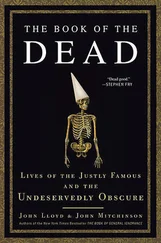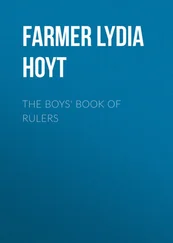After Joan’s trial, it was decreed that, for maximum media impact, she would be executed using a method from antiquity. Specifically, a medieval burning. Several reasons were given: first, no trace of her corpse could be left behind. She must be reduced to ash and scattered into space. While some expressed concern that her ashes might be captured and used to lionize her—or, worse, to anoint a new terrorist leader—the larger concern was that any piece of her body that remained might be seized upon as something of a holy relic—and one tangible, material relic could be as dangerous as an entire belief system.
Furthermore, it was decided that an old-fashioned burning would have the ultimate dramatic effect, that no other form of execution could tap into a collective psychic desire to watch the object of one’s devotion in peril. Though there was, admittedly, much discussion about devising an electric chair execution, which some claimed would have an equivalent impact on the populace, but which was ultimately rejected because it required too elaborate a mise-en-scène. Drowning was a popular suggestion, but water was scarce, and suggestions of producing a CGI version were quickly dismissed, as even the best simulations of water always looked like antiseptic gel. Since the event was to be filmed and disseminated via media outlets all over the world, a fire death was likely to create the most dazzling visual display, and thus promised to draw the largest possible audience.
Finally, it was decided: a burning execution, a barbarity dredged up from the annals of history. It would serve to remind the remaining population on Earth that the very elements they had fought to claim and protect on that ball of dirt they called home could at any moment destroy them—whether through ecological cataclysm or through fire itself, the simplest and most elemental force in nature. As easily as it had evolved them, it could destroy.
For fire’s sake they burned her.
A scaffold was erected, in the manner of old. Joan was positioned upon the scaffold within a staged version of some bombed-out city, barren as a desert; she was not made privy to the location of her execution, only that it would happen at night.
High winds tricked dust into the air, making the stage appear to float on a cloud of dirt.
She looked up at the black and blue of the night sky. We looked down at her, without her consciousness of our gaze. Or perhaps with her full awareness: at one point, the cameras caught her looking up, and in doing so she seemed to acknowledge the ultimate power of our position and the utter futility of her own.
Then the drama began. To be clear, it took several rehearsals of the burning to achieve the desired result, the perfect shot. Even with a director of the highest pedigree.
Hands propelled her roughly toward the scaffold where the stake and faggots were waiting, and hoisted her upon it; it was built of plaster and was very high, so high that the executioner had some trouble in reaching her. Instead of a crown of thorns, a tall paper cap, like a mitre, was set upon her head, bearing the words heretic, apostate, eco-terrorist.
She requested a tree branch. She said she only wanted to see it.
Instead, a visual facsimile was supplied. Joan flew into a rage.
“You mean to execute me and you cannot supply a single branch from a tree? What are you, sadists? Neanderthals? I know you must have one. You must have saved something from your destruction—a trophy, a prize, like a serial killer would. You must have an entire museum devoted to your every act of devastation.”
Finally, in what was considered an act of compassion, a small fig tree in a planter was placed in front of her, atop a wooden stage of sorts. The tree was as plastic as the planter.
Meanwhile, she was bound to the stake. She called out to the land, the earth, to animals, to the bones of animals, to the sky and rain and dead sun, to rivers and salted oceans and fungi and algae and insects—to beetles, of all things. To species long extinct and those now in their compromised twilight. Anxious CIEL authorities piped in synthesized laughter in a feckless attempt to undermine her message.
Before the kindling and wood were ignited, other forms of burning were produced. Boiling oil was poured upon her exposed flesh, molten lead directly onto her chest. Burning resin, wax, and sulfur melted together over her body, forming streams of liquid fire until the top few layers of her roasted away and her skin began to slip from her body. The scent of burnt blood and honey, mixed with meat and acrid ash, was recorded. Finally the wood was lit, and the flames leapt up the length of her body. How mesmerized we were at the image, a beacon through the flames, as if somehow her features had ascended Skyward— mouth and eyes too open, visage frozen upward, asking only Why? Or so we thought at the time.
As Trinculo and I buried our faces into each other’s flesh, cradling each other like animals, Joan of Dirt burned. She, the last piece of earth and everything it stood for.
It wasn’t Why she’d uttered that night, we later learned. In fact, it wasn’t a word at all.
It had been music. A song whose origins floated above our heads in the deep fields of space, cosmic strings plucked and rippling through time itself. A song that comes back to me a phrase at a time.
But it wasn’t a woman’s body burning we saw the day of her execution. That was all a matter of special effects.
Joan had escaped that day. Rather than admit it, they’d opted to spread false images of her death around the world, in endless succession, until the images and stories became one and the same. Until her death replaced her altogether.
But she was still out there.
There is no complicated set of ideas to consider. They are going to execute my beloved Trinculo, and no one but I will even take a breath differently. I have three aims: to finish my body work and develop a cell of like-minded comrades; to free Trinculo before they kill him; and to drive Jean de Men and the entire CIEL world straight into the godforsaken sun. Finish it.
There is a new kind of resistance myth emerging, one I suddenly understand: the world ended at the hands of a girl.
What an ungodly choice she made. To destroy life on Earth as we knew it because of the suffering she saw ahead.
When the volcanoes of earth erupted, when the waters rose and Joan emerged, it was clear to me now, we’d gotten the story all wrong. In our desire to claim her as ours, we’d misread our heroine’s aims. We thought she’d wanted to end the Wars, to save mankind, each of us secretly hoping to be chosen.
But Joan knew one thing we never learned: to end war meant to end its maker, to marry creation and destruction rather than hold them in false opposition.
The Bible and the Talmud, the Qur’an and the Bhagavad Gita, the scrolls of Confucius and Purvas and Vedas—all that is over, I understand now. In its place, we begin the Book of Joan. Our bodies holding its words.
My moment of pause is over. I bring my young comrades back into focus around me—busy as little clone bees—then plunge the heated stylus into the flesh of my left upper thigh, the skin soaring up with red-white, tiny traces of smoke tendril around my work.
I see her differently now.
Here is the revised battle scene that delivers to us this new world. Before her signature fills the sky in devastation, she stands at the familiar cusp of war, in the place we carved out for her as our savior, and carries out the opposite of a resurrection: a decreation. I raise the words. I burn:
Joan’s foot sunk into sand so surrendered to oil that her boots suctioned with each step to the black earth. In front of her, a multitude of snakes: snakes in the form of man-made roads, and river snakes of thickened-black crude, and toxin snakes from rivulets of runoff, and land snakes of sinking sand, and the jut and crease of eroded canyon edges cutting up and slithering out. Everything black and blue and smelling of excavation and the drive to conquer, colonize, deplete.
Читать дальше












